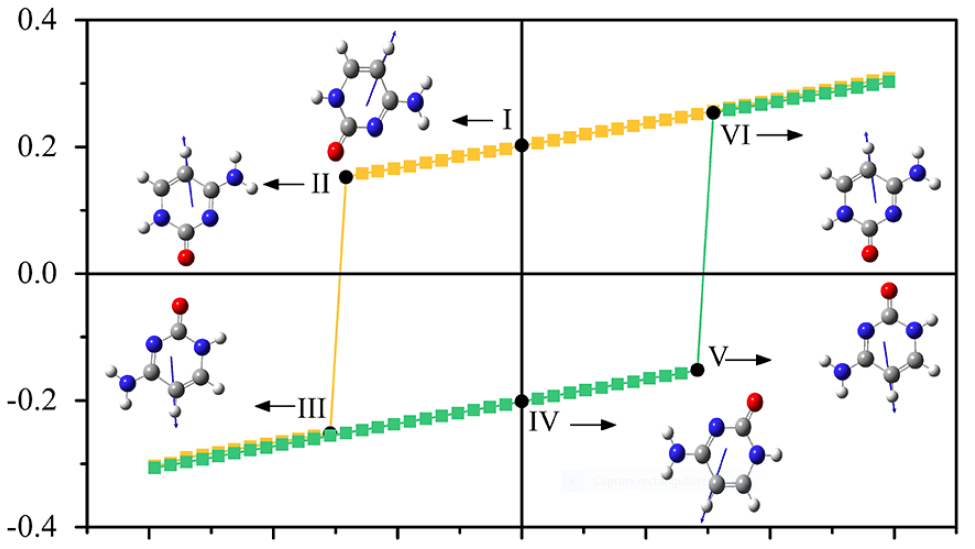EPJ E Highlight - Switching DNA and RNA on and off
- Details
- Published on 20 August 2018

Natural switching of DNA and RNA polarisation opens possibilities to develop novel biosensors and high-capacity data storage
DNA and RNA are naturally polarised molecules containing electric dipole moments due to the presence of a significant number of charged atoms at neutral pH. Scientists believe that these molecules have an in-built polarity that can be reoriented or reversed fully or in part under an electric field—a property referred to as bioferroelectricity. However, the mechanism of these properties remains unclear. In a new study published in EPJ E, See-Chuan Yam from the University of Malaya, Kuala Lumpur, Malaysia, and colleagues show that all the DNA and RNA building blocks, or nucleobases, exhibit a non-zero polarisation in the presence of polar atoms or molecules such as amidogen and carbonyl. They have two stable states, indicating that DNA and RNA basically have memory properties, just like a ferroelectric or ferromagnetic material. This is relevant for finding better ways of storing data in DNA and RNA because they have a high capacity for storage and offer a stable storage medium. Such physical properties may play an important role in biological processes and functions. Specifically, these properties could also be extremely useful for possible applications as a biosensor to detect DNA damage and mutation.
In this work, the authors employ computational molecular modelling to study the polarisation switching of DNA and RNA using a semi-empirical quantum mechanical approach. To do so, they model the five nucleobases which are the building blocks of DNA and RNA.
The authors also make an interesting discovery: that the minimum electric field required for switching the polarisation of a nucleobase is inversely proportional to the ratio of the topological polar surface area (TPSA) to the total surface area (TSA) of a nucleobase. This work may, therefore, also provide valuable insights for understanding the possible existence of ferroelectricity in biomaterials; further, the observed switching mechanism and ferroelectrical properties of DNA and RNA nucleobases could inform the future development of DNA and RNA-based nanomaterials and electronic devices.
S.-C. Yam, S. M. Zain, V. S. Lee, K.-H. Chew (2018),
Correlation between polar surface area and bioferroelectricity in DNA and RNA nucleobases,
Eur. Phys. J. E, 2018, 41:86. DOI: 10.1140/epje/i2018-11696-5




